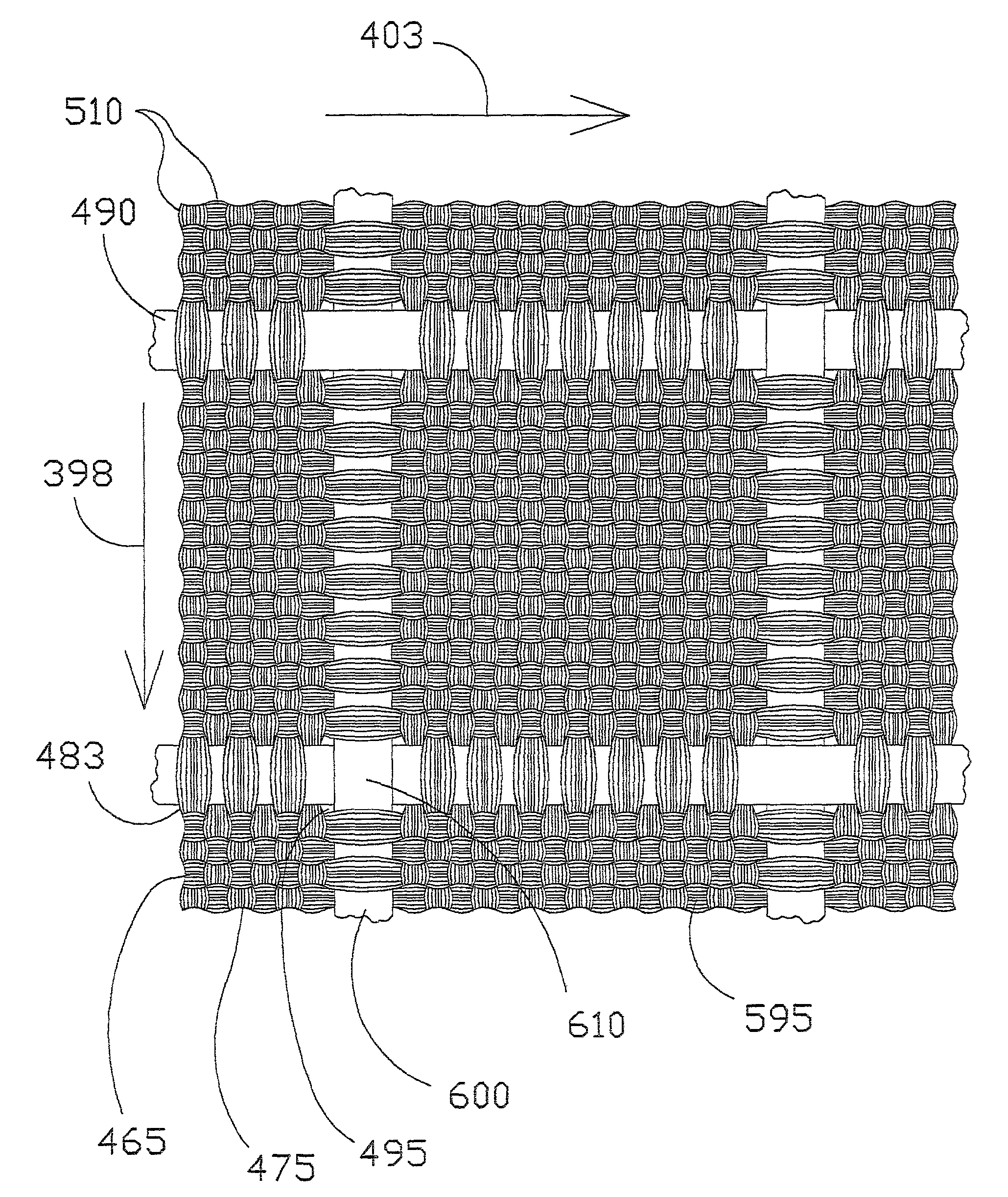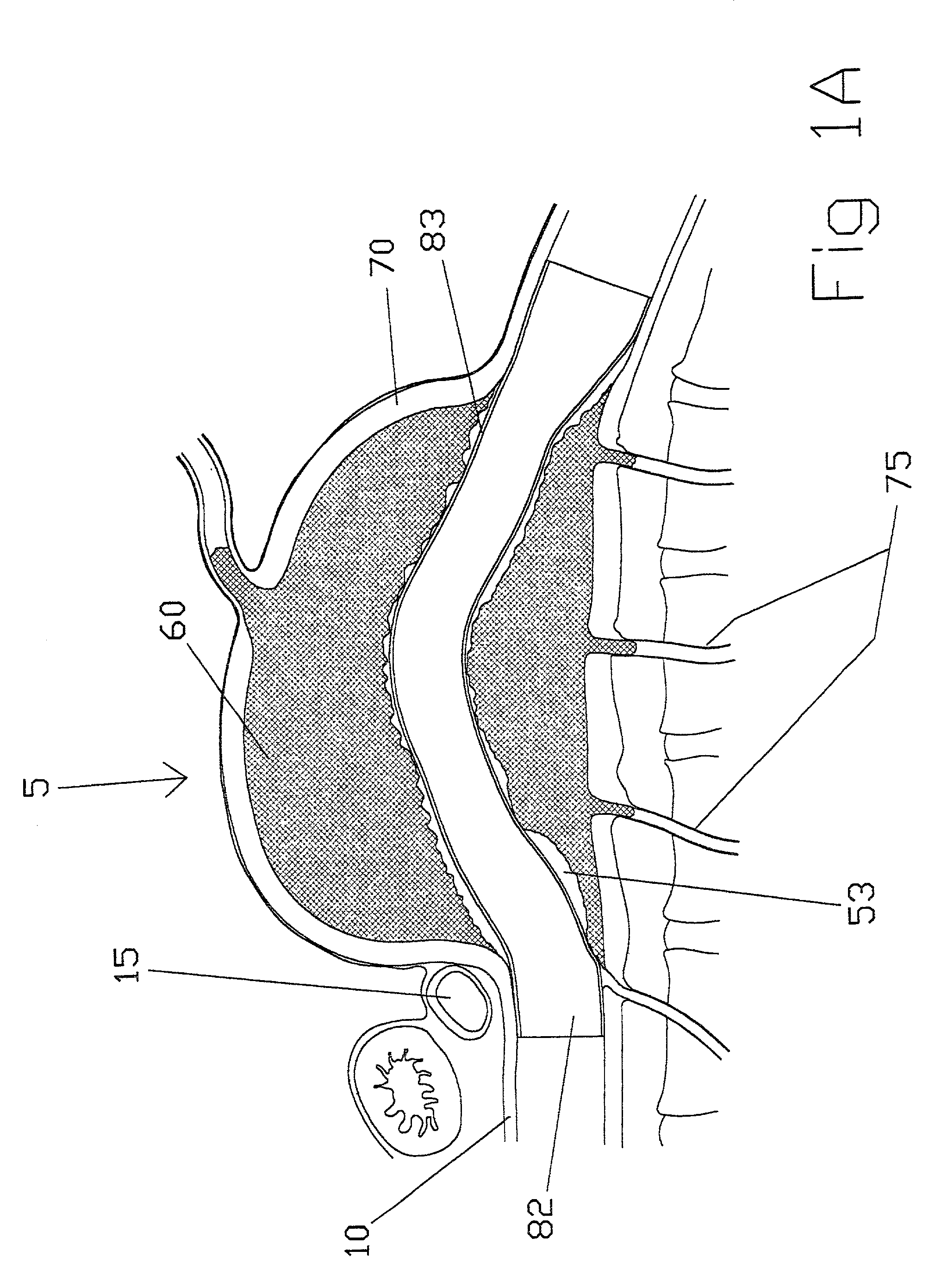An abdominal
aortic aneurysm is an outpouching of the wall of the
aorta that can continue to expand over time possibly leading to rupture and mortality.
Aortic distention can occur very abruptly just distal to the
renal vessels reaching a
diameter of six centimeters or greater and causing the onset of accompanying symptoms and requiring repair.
Failure to provide such a leak tight seal will allow
blood flow at arterial pressure to access the space between the
stent-graft and the outpouched
aorta.
Continued
exposure to
arterial blood pressure can result in farther expansion of the aneurysmal sac and could lead to sac rupture.
Due to the tortuous nature of the
blood flow pathway, it is impossible to properly size the length of the graft using these diagnostic techniques prior to implatation.
If the stent-graft is sized too short, then a portion of the
aneurysm may be left unprotected.
If the stent-graft is sized too long for example, then the blood flow to one or both of the internal iliac arteries may be compromised.
The method of securing the main
trunk of the stent-graft to the aorta caudal to the renal arteries described by Barone is also inadequate in many situations.
Forces imposed upon the stent-graft due to the surrounding
thrombus or
thrombus organization could easily cause the stent-graft of Barone to become kinked or stenotic thereby impairing its performance.
This stent-graft has a similar problem associated with estimating the graft length due to the
tortuosity associated with the blood flow pathway through the thrombus laden aortic
aneurysm.
This stent-graft suffers the same problem described for Barone in determining the length of the stent-graft prior to
implant.
Further, the stent-graft material is not supported throughout the entire stent-graft length thereby providing ample opportunity for stent-graft kinking and deformation within the
aneurysm.
This can lead to stent-graft migration after a period of time post
implant.
Other problems associated with the Barone device similarly apply to the Chuter device.
This device would have difficulty with positioning the proximal end of the second component within the proximal neck of the aorta.
Extreme
tortuosity found in the flow lumen of the aortic aneurysm would not allow this device to conform to its shape and would not allow a tight seal to be formed between the proximal end of the second component and the aorta.
Difficulty in determining the appropriate length for each of the two components would limit the usefulness of this device.
This
assembly has several potential problems associated with it.
Determining the appropriate length of the base stent-graft and each of the secondary stent-grafts cannot be accurately performed considering that all of the arteries involved can be very tortuous and difficult to estimate in length.
The seal that is required at the junction of the main to the secondary stent-grafts may have a tendency for leakage due to the geometry of that junction.
Glastra describes two cylindrically shaped secondary stent-grafts that are placed adjacent to each other and are required to expand out and seal against a larger cylindrical base stent-graft; this seal would be difficult to form and maintain.
Glastra does not address specific means for attachment of the proximal end of the base stent-graft to the aorta.
Due to the geometry of the stent it is not possible to obtain precise positioning of the barbs into the
aortic wall tissue to ensure long term anchoring that would prevent stent-graft migration and maintain an adequate leak tight seal.
Sizing the appropriate length of the main body in addition to the two stent-graft legs is difficult due to the
tortuosity found in the blood flow pathway of the aorta and iliac arteries.
This
system would also have difficulty in determining the appropriate length of the stent-graft due to vessel tortuosity.
In addition, this
system requires that the two proximal stents deform against each other and with the proximal neck of the aorta to form a leak tight seal; it is not likely that an appropriate seal or attachment to the proximal aortic neck would be made.
The length of the stent-graft must still be determined prior to
implant and
estimation of the length of the blood flow pathway is difficult to determine using standard
diagnostic equipment due to the tortuosity of the vessels involved in the aneurysmal dilation.
The springs have a large zig zag appearance similar to other prior art attachment means and the barbs are not well protected from inappropriate
snagging prior to deployment of the endovascular graft.
Each of these two composite or modular systems shares similar problems to the composite systems described earlier, including the potential for leakage at the junction sites as well as leakage at the junction of the
prosthesis with the vessel lumen.
 Login to View More
Login to View More  Login to View More
Login to View More 









